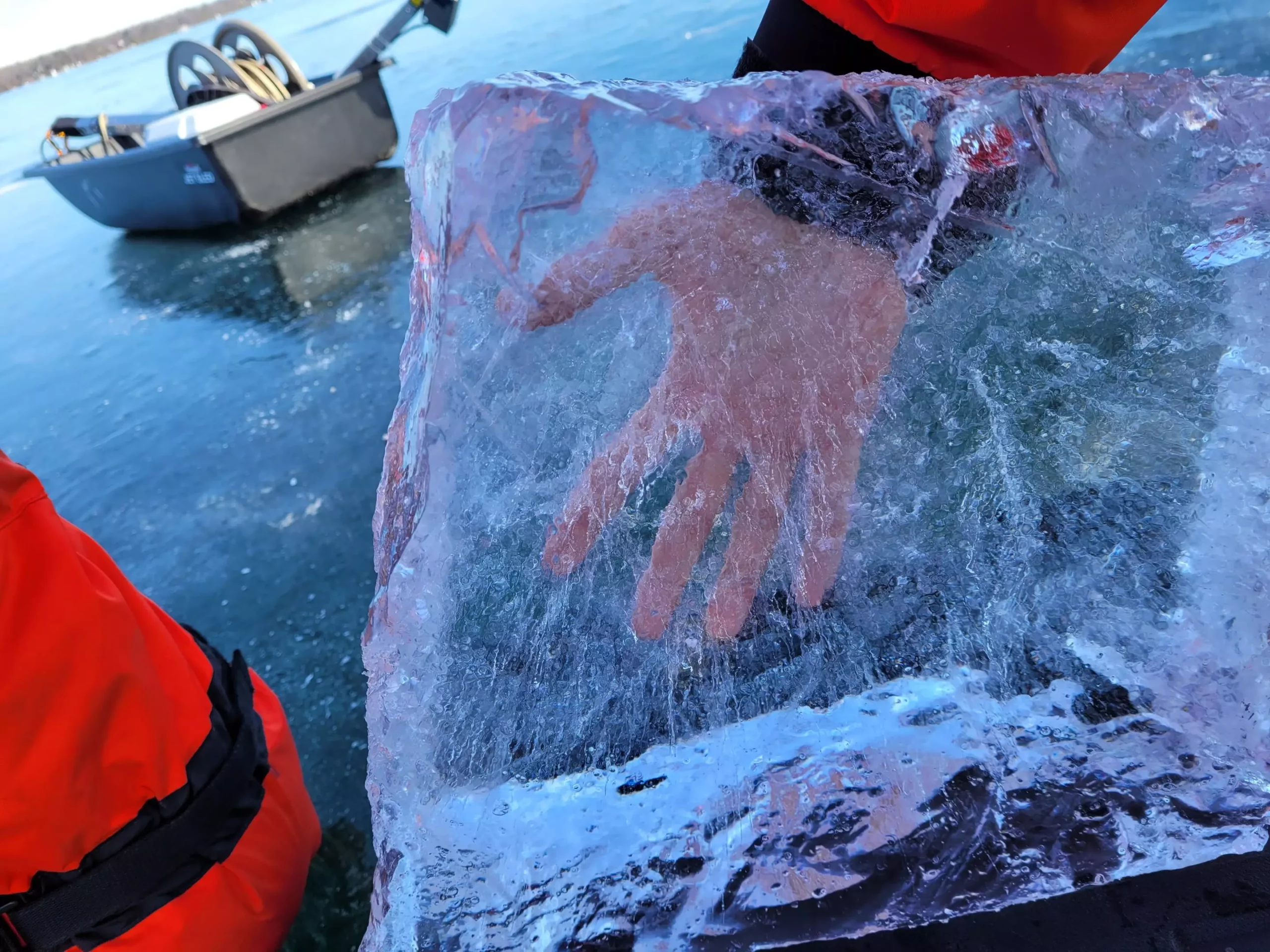As winter descends, many seek refuge on frozen lakes, believing them to be pristine landscapes ripe for recreational activities like ice hockey or skating. However, research from York University highlights a sobering truth: what appears to be a solid ice surface can mask potential dangers. Climate change, particularly warming temperatures, is not merely causing lakes to freeze later and thaw earlier; it is also impacting the quality of the ice itself. Ice quality diminishes following shifts in weather patterns, resulting in dangerous conditions for those who tread upon this seemingly safe terrain.
When lakes freeze, they develop specific layers that are crucial to understand for safety concerns: white ice and black ice. The former, characterized by its opaque appearance and a high concentration of air pockets, offers diminished strength. Conversely, black ice is transparent and densely packed, lending it significantly greater load-bearing capacity. According to Professor Sapna Sharma, the implications of ice quality extend beyond personal safety; they affect aquatic ecosystems reliant on light penetration through the ice. However, fluctuating weather phenomena have begun to alter the traditional ice composition, leading to a precarious combination of thinner black ice alongside thicker layers of the less stable white ice.
Recent findings indicate that people may feel confident skating or engaging in activities on seemingly solid ice without realizing the potential dangers lurking beneath. As lead author Joshua Culpepper explains, a lack of understanding about ice dynamics leads to a false sense of security. The insulation of ice that once offered reliable access has become increasingly unreliable. Research demonstrates that human safety hinges not merely on thickness—traditionally thought to be a straightforward measure of ice integrity—but more critically on the quality and type of ice one encounters. An unsettling reality emerges: thicker white ice may not provide adequate support for individuals or groups engaging in various ice-based endeavors.
The recent history of accidents underscores the pressing danger inherent in these changing ice conditions. Tragic incidents in Canada and Finland, where multiple drownings occurred within weeks due to thin and unstable ice, exemplify the risks. Statistics reveal that northern regions experience higher drowning rates, particularly in areas like the Arctic that are warming at an alarming pace—up to four times faster than the rest of the globe. These dire statistics outline a growing, and preventable, risk facing recreational enthusiasts, further emphasizing the need for awareness and caution.
The ramifications of unstable ice extend beyond recreational activities into the realm of logistics and transportation. Heavy vehicles, including transport trucks, require substantial thickness of black ice for safe operation, yet changing ice conditions threaten the very infrastructure that allows remote communities to access essential goods and services during the winter months. Predictions indicate that without proactive measures to adapt to these hazardous conditions, a staggering loss of winter ice road transportation capabilities could occur, leaving isolated communities vulnerable and cut off from critical resources.
To mitigate the risks associated with thin and unstable ice, researchers recommend proactive measures. One of the simplest yet most effective strategies is to measure the thickness and quality of the ice before venturing out. While the commonly accepted thickness for safe activity on black ice is around 10 centimeters, observers are urged to double that amount—recommending at least 20 centimeters—if the ice surface appears predominantly white. Safety experts advise against venturing onto ice marked by slush or other unstable signs, promoting group activities as a safer alternative to solo excursions.
Despite the critical insights gleaned from the study, a significant knowledge gap remains regarding ice quality monitoring across the Northern Hemisphere. Regular assessments evaluating black and white ice thickness are essential to inform recreational users and policymakers alike. The message is clear: understanding the evolving nature of ice quality is paramount to safeguarding lives and preserving aquatic ecosystems. Transparent action is required to combat the perils of unstable ice—as the ice changes, so too must our measures of safety and responsibility when enjoying winter’s icy playgrounds.
As our winter landscapes change, awareness of the hidden dangers lurking beneath the surface becomes crucial. The recreational allure of frozen lakes should coexist with a profound understanding of safety, quality, and respect for our climate. Only with such wisdom can we hope to navigate the shifting terrain of winter safely.


Leave a Reply